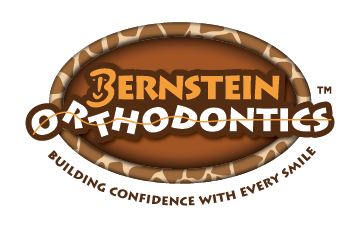February is National Children’s Dental Health Month! This month-long national health observance brings together thousands of dedicated orthodontic professionals, health-care providers, and others to promote the benefits of good oral health to children and adults, caregivers, teachers and many others. This week we want to focus on the importance of instilling proper dental hygiene with your children now that will benefit them well into adulthood.
From the time a toddler is tall enough to be boosted up to the bathroom sink, they’re told to brush their teeth, twice a day, every day, for at least two minutes, and then floss directly after. As most of us know, however, getting children to adhere and adjust to any new daily routine can be a bit challenging. Undeniably, a child’s first response to many of his or her parents’ instructions is a nagging, predictable, “Why?” While you could get away with a simple and firm “Because I said so.” when it comes to maintaining dental hygiene, it may benefit your child to understand why brushing and flossing are so essential. Here are 4 things you should be teaching your children about proper dental hygiene.
1. Brushing and flossing remove plaque buildup
Your child has probably heard the dentist mention “plaque,” but they may not fully grasp the concept. Explain to your child that plaque is a layer of sticky bacteria that rests on teeth until it’s brushed and flossed away properly, and that bacteria can be very aggressive.
2. Brushing after eating is never a bad idea
If you’ve told your child what plaque is, you should follow up and explain its relationship to bacteria, especially in regards to food. It’s important that they understand bacteria feeds off of sugar that gets left behind as a sort of footprint from the foods we eat by breaking it down into acids that attack our tooth enamel, which is how cavities are formed. Always especially encourage your child to brush after eating foods that are high in sugar.
3. Good dental hygiene prevents gingivitis
Emphasize that, in addition to attacking the enamel, plaque is also responsible for gingivitis. Make sure your child knows that this gum disease makes gums extremely sore, swollen, and red and can make everyday activities like eating and even talking uncomfortable.
4. Neglecting brushing and flossing will lead to bad breath and yellow teeth
Depending on your child’s age, this could be their greatest motivation for brushing and flossing. Older children are often self-conscious about their overall aesthetic and may be most concerned with the visible and odorous impacts of neglecting tooth care. Inform your child that the plaque that gathers on their teeth forms a foul smell and also tears away at white enamel, causing your teeth to appear more yellow.

